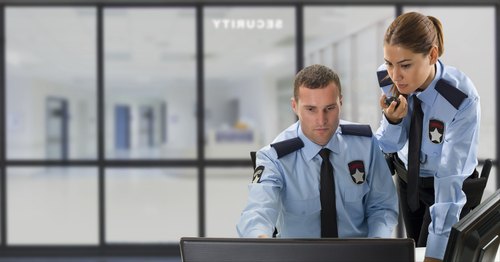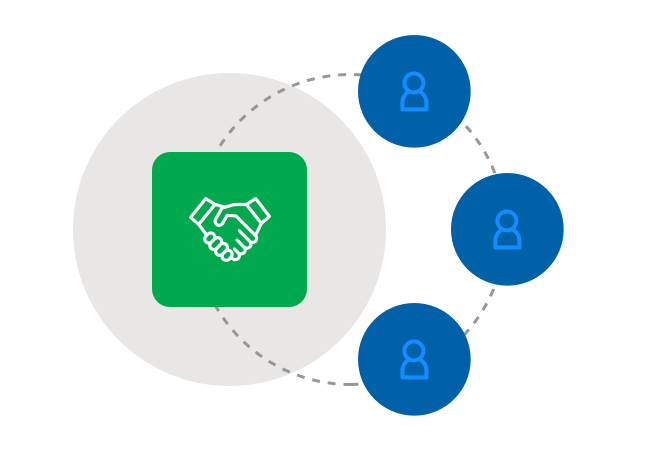From Cybersecurity to Physical Actions: Reinforcing Corporate Safety And Security in a Changing World
By incorporating the toughness of both cybersecurity and physical security, business can create a detailed protection approach that resolves the varied range of hazards they deal with. In this discussion, we will discover the changing danger landscape, the need to incorporate cybersecurity and physical security, the execution of multi-factor authentication procedures, the importance of employee understanding and training, and the adjustment of safety and security steps for remote labor forces. By taking a look at these vital locations, we will certainly gain important understandings right into exactly how companies can reinforce their company security in an ever-changing globe.
Understanding the Transforming Threat Landscape
The developing nature of the modern-day globe requires a detailed understanding of the altering threat landscape for efficient business protection. It is vital for organizations to remain notified and adapt their safety and security determines to attend to these advancing risks.
One key element of comprehending the altering hazard landscape is identifying the various kinds of risks that companies deal with. Cybercriminals are frequently establishing new techniques to manipulate vulnerabilities in computer systems and networks. These hazards can range from malware and ransomware attacks to phishing rip-offs and social design methods. Furthermore, physical dangers such as burglary, criminal damage, and business espionage remain prevalent concerns for organizations.
Tracking and assessing the risk landscape is essential in order to recognize prospective dangers and vulnerabilities. This includes staying upgraded on the most recent cybersecurity trends, evaluating danger intelligence reports, and conducting normal threat analyses. By recognizing the changing danger landscape, organizations can proactively apply proper security procedures to alleviate risks and shield their possessions, online reputation, and stakeholders.
Integrating Cybersecurity and Physical Security
Incorporating cybersecurity and physical safety is important for comprehensive corporate protection in today's electronic and interconnected landscape. As organizations increasingly count on modern technology and interconnected systems, the borders in between physical and cyber hazards are coming to be obscured. To successfully protect against these dangers, an alternative approach that incorporates both cybersecurity and physical safety actions is essential.
Cybersecurity focuses on protecting digital possessions, such as information, networks, and systems, from unauthorized access, interruption, and burglary. Physical security, on the other hand, incorporates actions to protect physical properties, individuals, and centers from dangers and susceptabilities. By integrating these 2 domains, companies can address susceptabilities and dangers from both electronic and physical angles, thus improving their general security position.
The integration of these 2 techniques enables a more extensive understanding of safety and security threats and makes it possible for a unified action to events. For instance, physical access controls can be improved by integrating them with cybersecurity procedures, such as two-factor verification or biometric recognition. In a similar way, cybersecurity measures can be matched by physical protection procedures, such as security video cameras, alarms, and secure gain access to factors.

Implementing Multi-Factor Verification Actions
As companies progressively focus on thorough safety steps, one reliable technique is the implementation of multi-factor authentication actions. Multi-factor authentication (MFA) is a security technique read the full info here that calls for customers to provide several kinds of identification to access a system or application. This technique adds an additional layer of defense by combining something the individual knows, such as a password, with something they have, like a fingerprint or a safety token.
By carrying out MFA, companies can substantially boost their security pose - corporate security. Traditional password-based authentication has its restrictions, as passwords can be quickly endangered or neglected. MFA mitigates these threats by including an added authentication variable, making it more challenging for unapproved people to obtain accessibility to sensitive details
There are numerous kinds of multi-factor verification approaches readily available, including biometric authentication, SMS-based confirmation codes, and equipment symbols. Organizations require to assess their specific needs and pick the most proper MFA option for their requirements.
Nevertheless, the application of MFA ought to be thoroughly prepared and carried out. It is critical to strike an equilibrium in between security and usability to avoid individual stress and resistance. Organizations needs to likewise think about possible compatibility concerns and provide ample training and assistance to make sure a smooth change.
Enhancing Staff Member Understanding and Training
To enhance business safety and security, companies must prioritize boosting employee awareness and training. Numerous protection breaches occur due to human mistake or lack of awareness.
Efficient staff member understanding and training programs need to cover a large range of subjects, consisting of information protection, phishing assaults, social engineering, password hygiene, and physical safety measures. These programs must be customized to the details demands and duties of different worker functions within the organization. Routine training workshops, sessions, and simulations can assist staff members create the essential abilities and understanding to recognize and react to security hazards properly.
Moreover, organizations must urge a society of protection awareness and provide recurring updates and pointers to keep employees educated regarding the latest risks and mitigation strategies. This can be done with inner interaction channels, such as e-newsletters, intranet websites, and e-mail campaigns. By fostering a security-conscious workforce, companies can substantially decrease the likelihood of security cases and secure their valuable possessions from unauthorized accessibility or concession.

Adapting Protection Measures for Remote Workforce
Adjusting company safety and security procedures to fit a remote labor force is important in making sure the defense of delicate info and properties (corporate security). With the increasing trend of remote work, organizations have to execute suitable safety procedures to minimize the risks related to this brand-new method of working
One vital facet of adjusting safety measures for remote job is establishing safe interaction networks. Encrypted messaging systems and online exclusive networks (VPNs) can help protect delicate details and protect against unauthorized access. Additionally, organizations should apply using strong passwords and multi-factor authentication to improve the safety of remote gain access to.
An additional vital factor to consider is the execution of safe remote gain access to options. This includes supplying employees with secure accessibility to corporate resources and data via online desktop infrastructure (VDI), remote desktop methods (RDP), or cloud-based remedies. These innovations make sure that sensitive information continues to be secured while allowing staff members to do their functions efficiently.

Lastly, extensive safety awareness training is essential for remote workers. Educating sessions should cover best methods for firmly accessing and taking care of delicate details, recognizing and reporting phishing attempts, and maintaining the general cybersecurity hygiene.
Final Thought
To conclude, as the threat landscape remains to progress, it is critical for companies to reinforce their security gauges both in the cyber and physical domain names. Incorporating cybersecurity and physical security, implementing multi-factor authentication steps, and improving worker understanding and training are necessary actions towards attaining durable business safety. Furthermore, adapting protection steps to fit remote workforces is necessary in today's changing world. By implementing these measures, companies can minimize dangers and secure their valuable properties from possible risks.
In this conversation, we will explore the transforming danger landscape, the need to incorporate cybersecurity and physical safety and security, the execution of multi-factor verification steps, the relevance of worker recognition and training, and the adaptation of security measures for remote labor forces. Cybersecurity measures can be view website matched by physical security procedures, such as security video cameras, alarm systems, and protected accessibility points.
As companies progressively focus on comprehensive safety measures, one efficient technique is the application of multi-factor verification procedures.In verdict, as the danger landscape proceeds to progress, it is essential for companies to strengthen their protection measures both in the cyber and physical domains. Incorporating cybersecurity and physical protection, applying multi-factor verification steps, and boosting staff member awareness and training are important More Bonuses actions in the direction of accomplishing robust business safety and security.